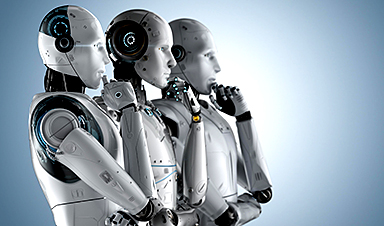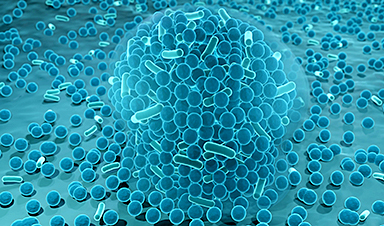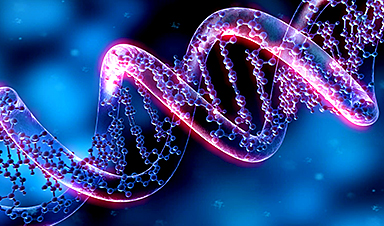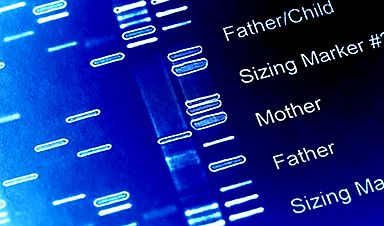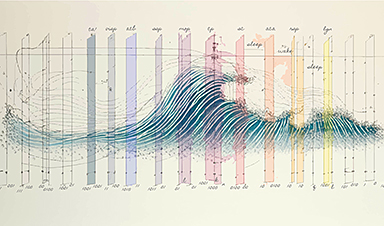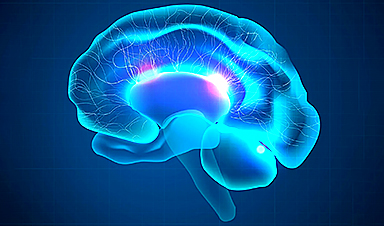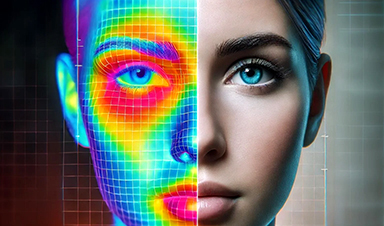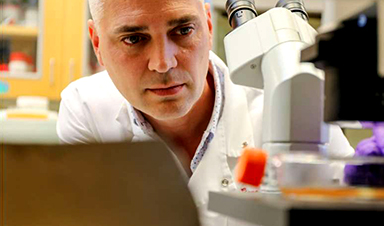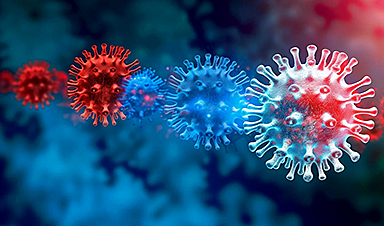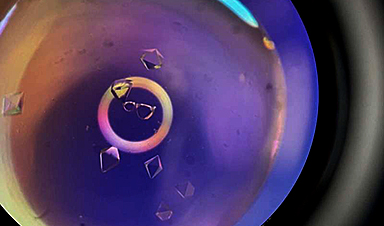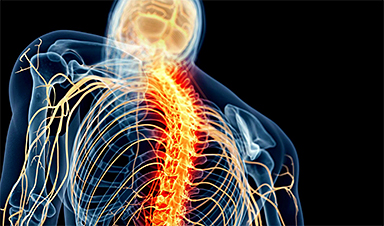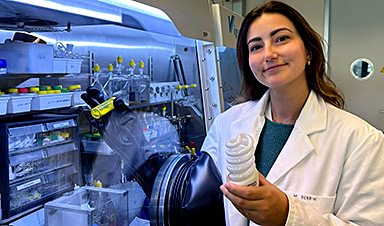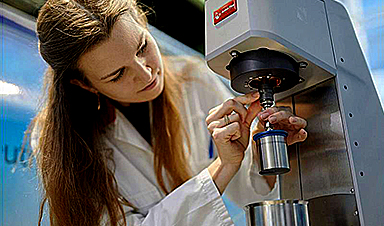An AI-powered model utilizes chest X-rays to help develop biomarkers for aging.
What if determining “your age” was based on your chest rather than your face? Scientists from Osaka Metropolitan University have crafted an advanced AI model that uses chest X-rays to precisely gauge a patient’s actual age. Importantly, when there is a disparity, it can signal a correlation with chronic disease.
This breakthrough in medical imaging paves the way for enhanced early disease identification and treatment. The research was recently published in the journal The Lancet Healthy Longevity.
The research team, led by graduate student Yasuhito Mitsuyama and Dr. Daiju Ueda from the Department of Diagnostic and Interventional Radiology at the Graduate School of Medicine, Osaka Metropolitan University, first constructed a deep learning-based AI model to estimate age from chest radiographs of healthy individuals.

The upper images are the chest radiographs of patients from 21 to 40 years old and from 81 to 100 years old chronologically and the lower images are a visualization of the AI’s focus (both after averaging). Red indicates the points most useful for age determination. Credit: Yasuhito Mitsuyama, OMU
They then applied the model to radiographs of patients with known diseases to analyze the relationship between AI-estimated age and each disease. Given that AI trained on a single dataset is prone to overfitting, the researchers collected data from multiple institutions.
For the development, training, internal and external testing of the AI model for age estimation, a total of 67,099 chest radiographs were obtained between 2008 and 2021 from 36,051 healthy individuals who underwent health check-ups at three facilities. The developed model showed a correlation coefficient of 0.95 between the AI-estimated age and chronological age. Generally, a correlation coefficient of 0.9 or higher is considered to be very strong.
To validate the usefulness of AI-estimated age using chest radiographs as a biomarker, an additional 34,197 chest radiographs were compiled from 34,197 patients with known diseases from two other institutions. The results revealed that the difference between AI-estimated age and the patient’s chronological age was positively correlated with a variety of chronic diseases, such as hypertension, hyperuricemia, and chronic obstructive pulmonary disease. In other words, the higher the AI-estimated age compared to the chronological age, the more likely individuals were to have these diseases.
“Chronological age is one of the most critical factors in medicine,” stated Mr. Mitsuyama. “Our results suggest that chest radiography-based apparent age may accurately reflect health conditions beyond chronological age. We aim to further develop this research and apply it to estimate the severity of chronic diseases, to predict life expectancy, and to forecast possible surgical complications.”
Reference: “Chest radiography as a biomarker of ageing: artificial intelligence-based, multi-institutional model development and validation in Japan” by Yasuhito Mitsuyama, Toshimasa Matsumoto, Hiroyuki Tatekawa, Shannon L Walston, Tatsuo Kimura, Akira Yamamoto, Toshio Watanabe, Yukio Miki and Daiju Ueda, 16 August 2023, The Lancet Healthy Longevity.
DOI: 10.1016/S2666-7568(23)00133-2
News
Breakthrough in Antimicrobial Technology with Cinnamon-Based Nanokiller
The need for innovative antimicrobial agents has become increasingly urgent due to the rise of antibiotic-resistant pathogens and the persistent threat of infections acquired during hospital stays. Traditional antibiotics and antiseptics are often ineffective [...]
The Silent Battle Within: How Your Organs Choose Between Mom and Dad’s Genes
Research reveals that selective expression of maternal or paternal X chromosomes varies by organ, driven by cellular competition. A new study published today (July 26) in Nature Genetics by the Lymphoid Development Group at the MRC [...]
Study identifies genes increasing risk of severe COVID-19
Whether or not a person becomes seriously ill with COVID-19 depends, among other things, on genetic factors. With this in mind, researchers from the University Hospital Bonn (UKB) and the University of Bonn, in [...]
Small regions of the brain can take micro-naps while the rest of the brain is awake and vice versa
Sleep and wake: They're totally distinct states of being that define the boundaries of our daily lives. For years, scientists have measured the difference between these instinctual brain processes by observing brain waves, with [...]
Redefining Consciousness: Small Regions of the Brain Can Take Micro-Naps While the Rest of the Brain Is Awake
The study broadly reveals how fast brain waves, previously overlooked, establish fundamental patterns of sleep and wakefulness. Scientists have developed a new method to analyze sleep and wake states by detecting ultra-fast neuronal activity [...]
AI Reveals Health Secrets Through Facial Temperature Mapping
Researchers have found that different facial temperatures correlate with chronic illnesses like diabetes and high blood pressure, and these can be detected using AI with thermal cameras. They highlight the potential of this technology [...]
Breakthrough in aging research: Blocking IL-11 extends lifespan and improves health in mice
In a recent study published in the journal Nature, a team of researchers used murine models and various pharmacological and genetic approaches to examine whether pro-inflammatory signaling involving interleukin (IL)-11, which activates signaling molecules such [...]
Promise for a universal influenza vaccine: Scientists validate theory using 1918 flu virus
New research led by Oregon Health & Science University reveals a promising approach to developing a universal influenza vaccine—a so-called "one and done" vaccine that confers lifetime immunity against an evolving virus. The study, [...]
New Projects Aim To Pioneer the Future of Neuroscience
One study will investigate the alterations in brain activity at the cellular level caused by psilocybin, the psychoactive substance found in “magic mushrooms.” How do neurons respond to the effects of magic mushrooms? What [...]
Decoding the Decline: Scientific Insights Into Long COVID’s Retreat
Research indicates a significant reduction in long COVID risk, largely due to vaccination and the virus’s evolution. The study analyzes data from over 441,000 veterans, showing lower rates of long COVID among vaccinated individuals compared [...]
Silicon Transformed: A Breakthrough in Laser Nanofabrication
A new method enables precise nanofabrication inside silicon using spatial light modulation and laser pulses, creating advanced nanostructures for potential use in electronics and photonics. Silicon, the cornerstone of modern electronics, photovoltaics, and photonics, [...]
Caught in the actinium: New research could help design better cancer treatments
The element actinium was first discovered at the turn of the 20th century, but even now, nearly 125 years later, researchers still don't have a good grasp on the metal's chemistry. That's because actinium [...]
Innovative Light-Controlled Drugs Could Revolutionize Neuropathic Pain Treatment
A team of researchers from the Institute for Bioengineering of Catalonia (IBEC) has developed light-activated derivatives of the anti-epileptic drug carbamazepine to treat neuropathic pain. Light can be harnessed to target drugs to specific [...]
Green Gold: Turning E-Waste Into a Treasure Trove of Rare Earth Metals
Scientists are developing a process inspired by nature that efficiently recovers europium from old fluorescent lamps. The approach could lead to the long-awaited recycling of rare earth metals. A small molecule that naturally serves [...]
Cambridge Study: AI Chatbots Have an “Empathy Gap,” and It Could Be Dangerous
A new study suggests a framework for “Child Safe AI” in response to recent incidents showing that many children perceive chatbots as quasi-human and reliable. A study has indicated that AI chatbots often exhibit [...]
Nanoparticle-based delivery system could offer treatment for diabetics with rare insulin allergy
Up to 3% of people with diabetes have an allergic reaction to insulin. A team at Forschungszentrum Jülich has now studied a method that could be used to deliver the active substance into the [...]
